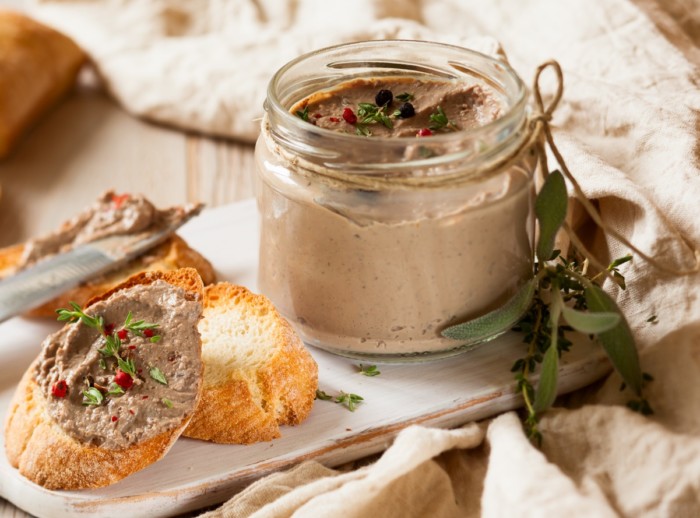How to properly store liver and liver pate: how long and under what conditions
Fresh liver is a perishable product. Under no circumstances should it be left in the kitchen until it is processed. A spoiled liver can cause serious poisoning.
The shelf life of the liver of different animals depends on temperature conditions, storage methods and containers.
Proper liver storage

Cattle liver can be chilled or frozen. Poultry liver can be stored in four states.
- When chilled (with thermometer readings from 0 ˚C to +4 ˚C): if the temperature of the refrigeration device is from 0 to +2˚C, then the product will be suitable for consumption for 2 days; if from -1 ˚C to +1 ˚C – 4 days and no longer; cooled liver, placed at production in a polymer package in which there is a gaseous environment, and if the temperature ranges from 0 ˚C to +4 ˚C, can be stored for up to 15 days.
- Frozen (from -2 ˚C to -3 ˚C; shelf life 7 days).
- Frozen (not higher than -8 ˚C). In this state, the liver is suitable for consumption for 4 months.
- When deep frozen (-18 ˚C and below), the product can be stored from six months to 10 months.
The liver should absolutely not be re-frozen.
Proper storage of liver pate

Liver pate prepared at home should be stored in a refrigerator in an airtight container.Thus, it will be able to stand in suitable condition for 2 days. The beginning of the degradation process will be indicated by darkening of the product. Also, if you are sure that freshly prepared liver pate cannot be consumed in one go, then part of it can be frozen. Defrosting must be done gradually; such a rapid process is unacceptable.
It is worth emphasizing that there is nothing more valuable than a fresh product, especially if it is perishable.
See the video “How to choose the right liver?”:






















